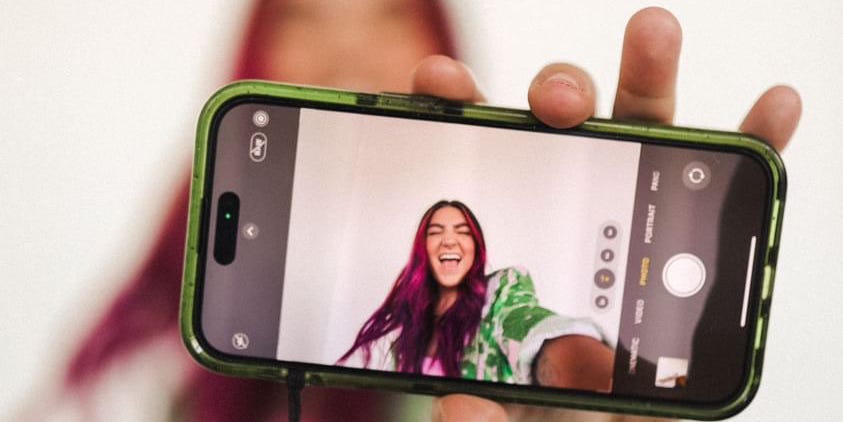The first time he saw a short-form video ad made entirely using AI, Will Sartorius thought it was “mind-boggling.”
Sartorius is the CEO of the agency SelfMade, which works primarily with direct-to-consumer brands on social advertising. The company is openly AI-driven and has integrated the technology into creative functions like scripting, editing, and adding captions to videos.
In March, Sartorius came across a viral ad in the style of user-generated content that was made using the AI tool Arcads. The video had the industry abuzz about the possibilities of AI in social-media advertising. In the clip, a woman sitting in the front seat of her car discusses body odor and deodorant — it could easily pass as real, but it uses an AI avatar based on actor Ariel Marie.
After seeing the ad, Sartorius reached out to Arcads — as well as the makers of similar tools like HeyGen or Creatify — to work with them. Since then, Sartorius said SelfMade’s workflow has changed dramatically, and gotten faster and more efficient.
“Getting a UGC creator to generate content will range from three weeks to two months,” Sartorius said. “Using Arcads or Creatify is 15 to 30 minutes, and with it, you can test so many more angles and personas than you would be able to with solely content creators.”
But not everyone in the creator space is as on board with AI as Sartorius. Several creators and agencies told Business Insider that they’re proceeding with caution and weighing their options as they wonder what consequences relying too much on AI could have.
Vic Banham, director and CEO at TikTok-first ad agency Antler Social, said AI-generated ads could end up alienating audiences and make them feel deceived — especially when not disclosed.
“You lose that connection a little bit,” she said. “The minute people become savvy to it, they potentially could trust that brand a lot less.”
Creators are grappling with what it means to give away their likenesses
Creators are reflecting on the potential consequences of turning themselves into AI.
Ariel Marie told Fast Company that she never worried selling her likeness to an AI company would end her career as an actor or limit her work opportunities with brands.
“It will never be a real human being,” she told Fast Company. “It’ll be close, absolutely, but it’ll never have my characteristics, my mannerisms. You can’t fake that.”
But, other creators who rely on UGC ads and brand collaborations for their income weren’t as optimistic. Some said they worried brands wouldn’t compensate them fairly for their likenesses.
“I would be very disappointed in brands for trying to find a loophole around actually paying creators,” said micro influencer Kristen Bousquet. “If this is something that caught on, I’d be very scared for the future of my business.”
Beyond AI companies like the one Ariel Marie worked with, brands are experimenting with acquiring people’s likenesses to turn them into AI. Thya Sanders, an attorney who owns legal-advisory firm Bloomie for Creators, said she’d seen some brands start to include clauses asking creators to license not only their name, image, and likeness but also their eye movements, facial expressions, and voice cadence.
UGC creator Patricia Redulla said she’s increasingly encountered AI clauses in contracts with brands — one of these clauses, viewed by BI, said she’d be giving the brand the right to turn her voice and facial features into AI and required her to give up her likeness in perpetuity, with the aim of using it in future advertising or commercial activities at the discretion of the company.
Redulla said she was not offered extra payment for this type of use of her likeness but felt compelled to sign the contract to avoid losing the job. If these clauses become more common, she hopes brands will start compensating creators for the rights to their likenesses like they do when whitelisting their content or using it for paid social advertising.
But even with more money on the table, some creators may not be open to being turned into avatars. Four creators told BI they wouldn’t consider selling their likeness.
“As a creator, I would never do that because the money is in your intelligence, your IP, your creativity,” said Jeneba Wint, a technologist and creator. “That’s where your uniqueness is, where your brand is, where your value is.”
AI is still far from taking over the UGC space — for now
While the virality of the Arcads ad generated a lot of noise around AI and UGC, ad-industry execs said humans are still the go-to for this type of social advertising.
Chris Robinson, paid social director at WPP-owned ad agency Goat, and Banham at Antler Social said they’ve implemented little to no generative AI in their work and don’t plan to start using it for creative tasks.
“The reason why we find influencer stuff works so well is because it’s real people telling real stories,” Robinson said. He said WPP is investing heavily in AI, but more as an “efficiency play” that can help speed up repetitive processes.
Many brands are erring on the side of caution when it comes to AI, too. Sanders said that while she had seen a few AI-friendly clauses in contracts, language against AI is more common. This includes sentences that warn against using generative AI for anything from idea generation to scripts to editing.
“If I were their legal counsel on the brand side, I would probably put that in,” she said.
It will take time before brands really start embracing AI, especially for functions that are openly targeted at taking over the role of real people.
For his part, Romain Torres, cofounder of Arcads, said he’s not interested in eliminating humans from advertising and doesn’t think the industry is headed in that direction.
“People will use AI more and more in the creation process of content, but that doesn’t mean that no humans will be involved in the process,” he said. “It’ll be different areas that they will focus on.”
Read the full article here





